Multiple-personality case of Billy Milligan still fascinates
No one seems to know Billy Milligan these days, not that anyone ever did.
He was a criminal or a victim; an expert actor or so disturbed that his mind fractured into at least 24 personalities. He kidnapped three women from the Ohio State University campus area, raped them and said that part of him did it for affection.
One of the women told an investigator that the rapist had a German accent, though Milligan was born in Florida and raised in Circleville and Lancaster. Another said the rapist had been nice enough that, in different circumstances, she might have considered dating him.
Billy Milligan story on Netflix: French filmmakers use Greater Columbus voices to tell Billy Milligan story on Netflix
Billy Milligan movie review:: Billy Milligan documentary offers even-handed look at complicated case
Billy Milligan: Billy Milligan case brought attention to multiple-personality disorder
Milligan's birth name was William, but he was also Ragen, Arthur, Adalana, Christene and 19 others. He was the first person in American history to successfully use multiple-personality disorder as a defense for a violent crime.
The people once closest to him haven't heard from him in at least 10 years -- not the doctor who treated him, not the bestselling author who wrote two books about him, not his mother. A man in California has several thousand dollars to give him if he could just find him.
But it's never been easy to get close to Billy Milligan.
Billy Milligan crimes began in the1970s
The first rape was on Oct. 14, 1977.
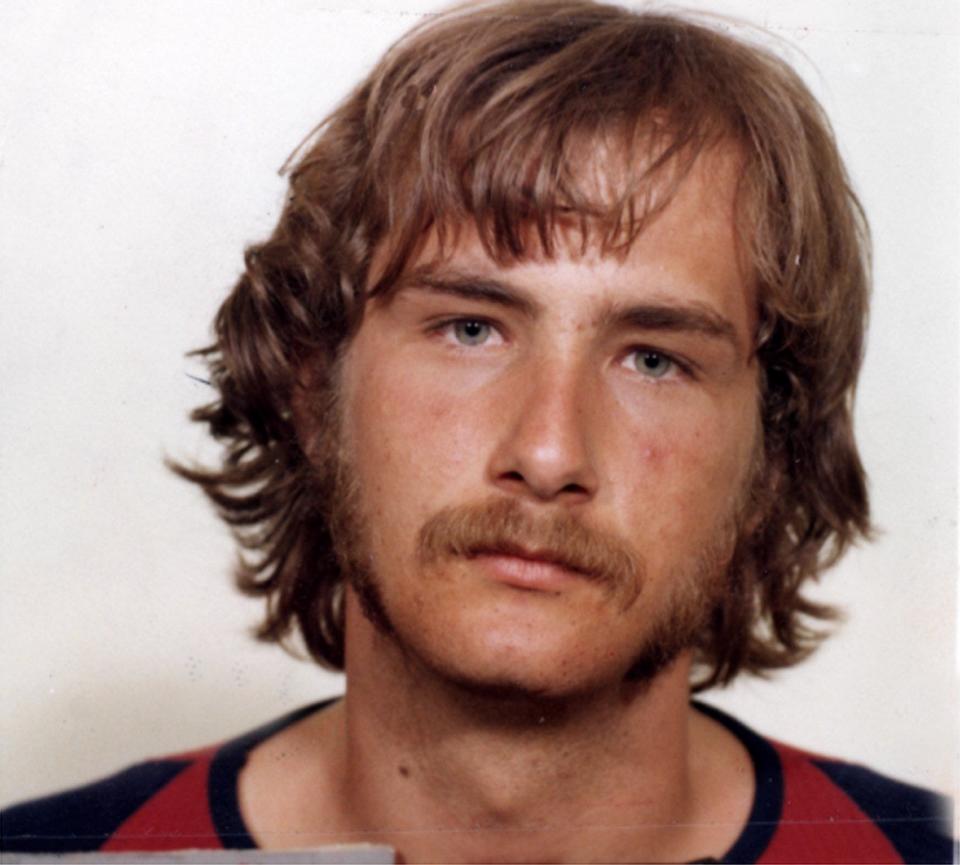
Milligan pointed a gun at an OSU optometry student and took her from a campus parking lot to a wooded area. When it was over, he made her write a check and cash it for him.
The second was on Oct. 22. The third was on Oct. 26. And on Oct. 27, 1977, one of the victims picked Milligan's face out of a group of mug shots. Milligan, 22, had been convicted of rape before and had been in prison that year for robbery. One of his fingerprints on file matched a print found on one of the victim's cars. Columbus and OSU police arrested him at his home in Reynoldsburg.
Elliot Boxerbaum, then the OSU police investigations supervisor, read Milligan his rights and rode with him to Columbus police headquarters.
"I couldn't tell you what was going on, but it was like I was talking to different people at different times," he said.
Doctors examined Milligan, and even the skeptical ones saw what Boxerbaum described. Milligan's public defenders, Judy Stevenson and Gary Schweickart, told the prosecution what they intended to argue in court.
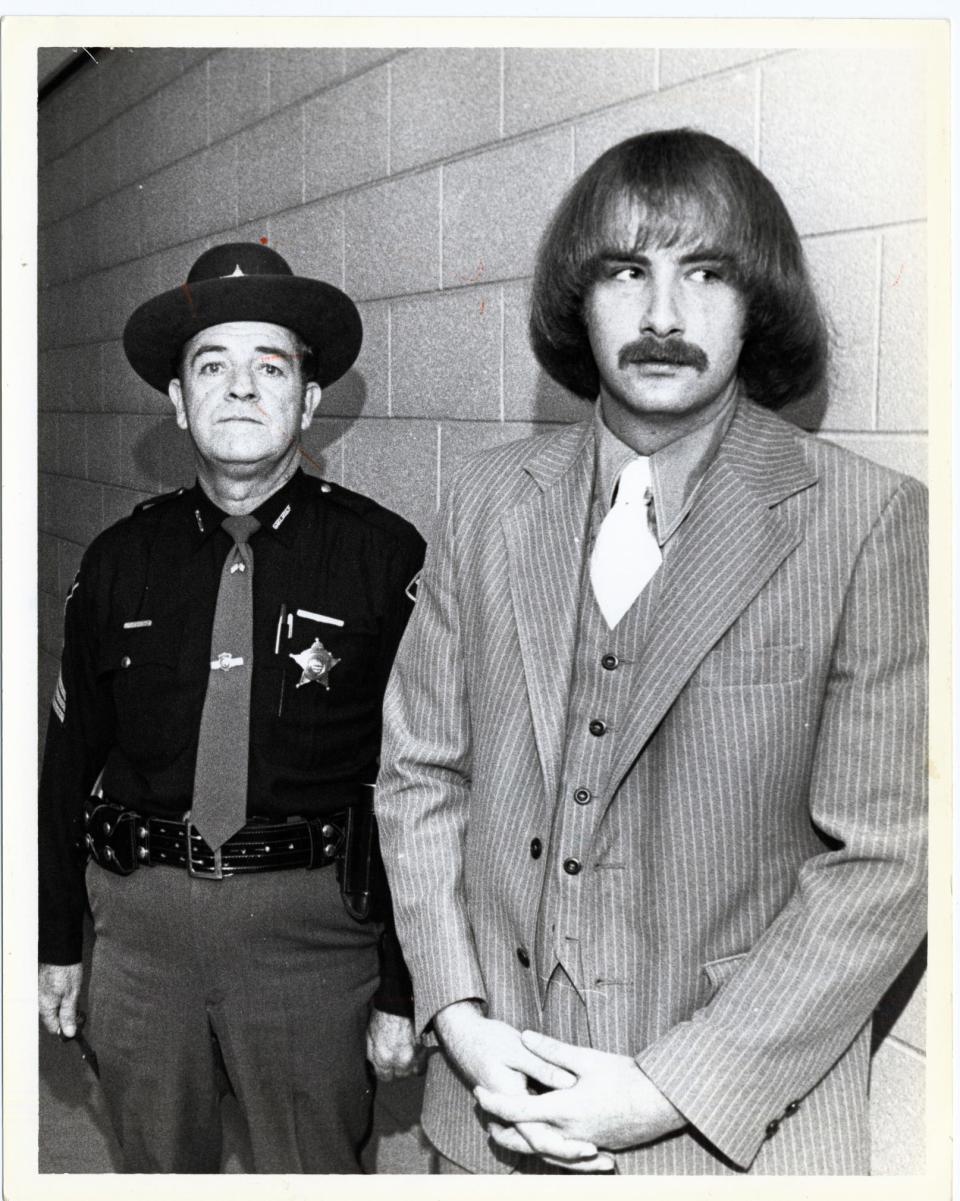
Billy Milligan's personalities in 1978: Billy Milligan's personalities
Infamous Ohio crimes: How they were caught
"Gary Schweickart came to me with this cockamamie story," said Terry Sherman, a Columbus lawyer who was one of the assistant Franklin County prosecutors on the case.
Billy Milligan and his multiple-personalities surface
A subsequent psychiatric report spelled it out: A 23-year-old Yugoslavian named Ragen had taken over Milligan's consciousness and decided to rob some people. But before Ragen could rob anyone, a 19-year-old lesbian named Adalana took over Milligan's body and raped the women because she wanted to feel close to someone. The other personalities, including "Billy," had no memory of that.
"A ludicrous story," Sherman said.
Then he sat in an interview with Milligan and watched him turn into different people. Bernard Yavitch, the other prosecutor, watched it, too.
"I saw multiple personalities," said Yavitch, who is now a defense attorney in Columbus. "His speech pattern was different, his accents were different. He sat different ways in the chair."
Dr. George Harding, the widely respected medical director of Harding Hospital in Worthington, spent months with Milligan and diagnosed multiple-personality disorder (now called dissociative identity disorder). With everyone in basic agreement --- the evidence showed that Milligan committed the crimes but also that he wasn't responsible for them --- Franklin County Common Pleas Judge Jay Flowers found him not guilty by reason of insanity and sent him to the Athens Mental Health Center in the southeastern Ohio college town.
The strange story of Billy Milligan could have ended there. It didn't.
Billy Milligan and his tome in Lancaster, Ohio
Milligan was born William Stanley Morrison in 1955 in Miami, the son of a singer, Dorothy Sands, and a comedian, John Morrison. Morrison and Sands already had a son together and would have a daughter later, but Morrison remained married to another woman.
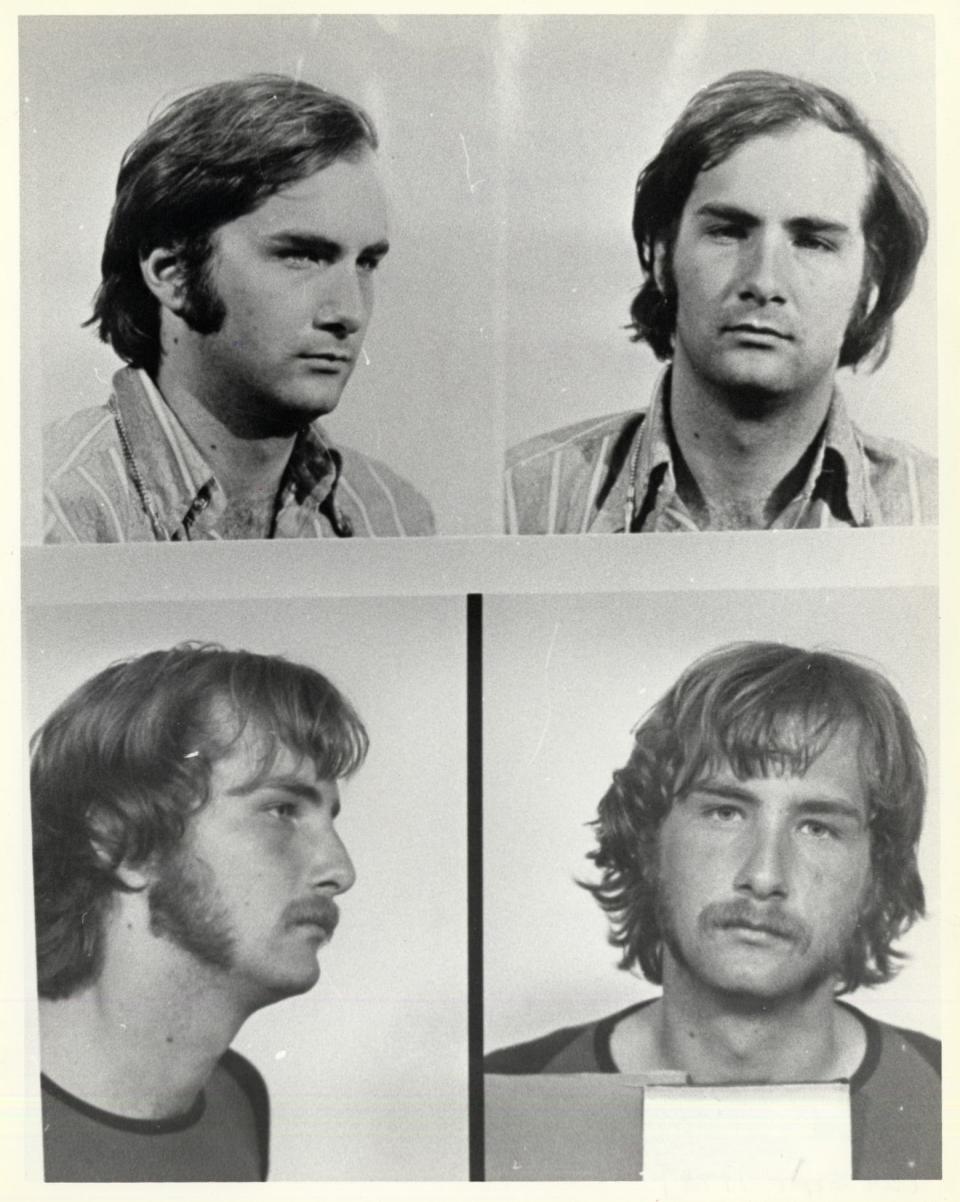
Morrison suffered from depression and alcoholism and killed himself when Milligan was 4 years old. Milligan's mother moved the family back home to Circleville in 1960, where she married her ex-husband, then divorced him again.
In 1963, she married Chalmer Milligan, and they moved the family to Lancaster. According to psychiatric reports based on Billy Milligan's memory, his new stepfather repeatedly sodomized him and otherwise tortured him by burying him alive and hanging him by his toes and fingers. Chalmer Milligan denied all of those allegations, and he was never charged.
The abuse caused Milligan's personality to splinter, psychiatrists said, and from that point on, he ran into trouble almost everywhere. Milligan was suspended from junior high school because he went into trances and wandered around Lancaster. His parents committed him to a state mental hospital on the Hilltop in Columbus where hysterical neurosis was diagnosed.
The hospital kicked him out three months later because his behavior was too disruptive. Lancaster High School expelled him in 1972, and he joined the Navy. The Navy discharged him a month later because he couldn't adapt to Navy life.
Milligan and a friend picked up some women that same year, and a few days later, the women accused them of rape. Milligan and his friend said the women were prostitutes and that, when Milligan couldn't perform sexually, they weren't paid. A judge found Milligan and his friend guilty, and Milligan served six months in a Zanesville youth camp.
After Milligan's release, according to a book about him, his personalities began working as a security guard for a drug and gun dealer. In late 1974, two cross-dressing men approached Milligan at a rest stop. He beat them up and took their purses.
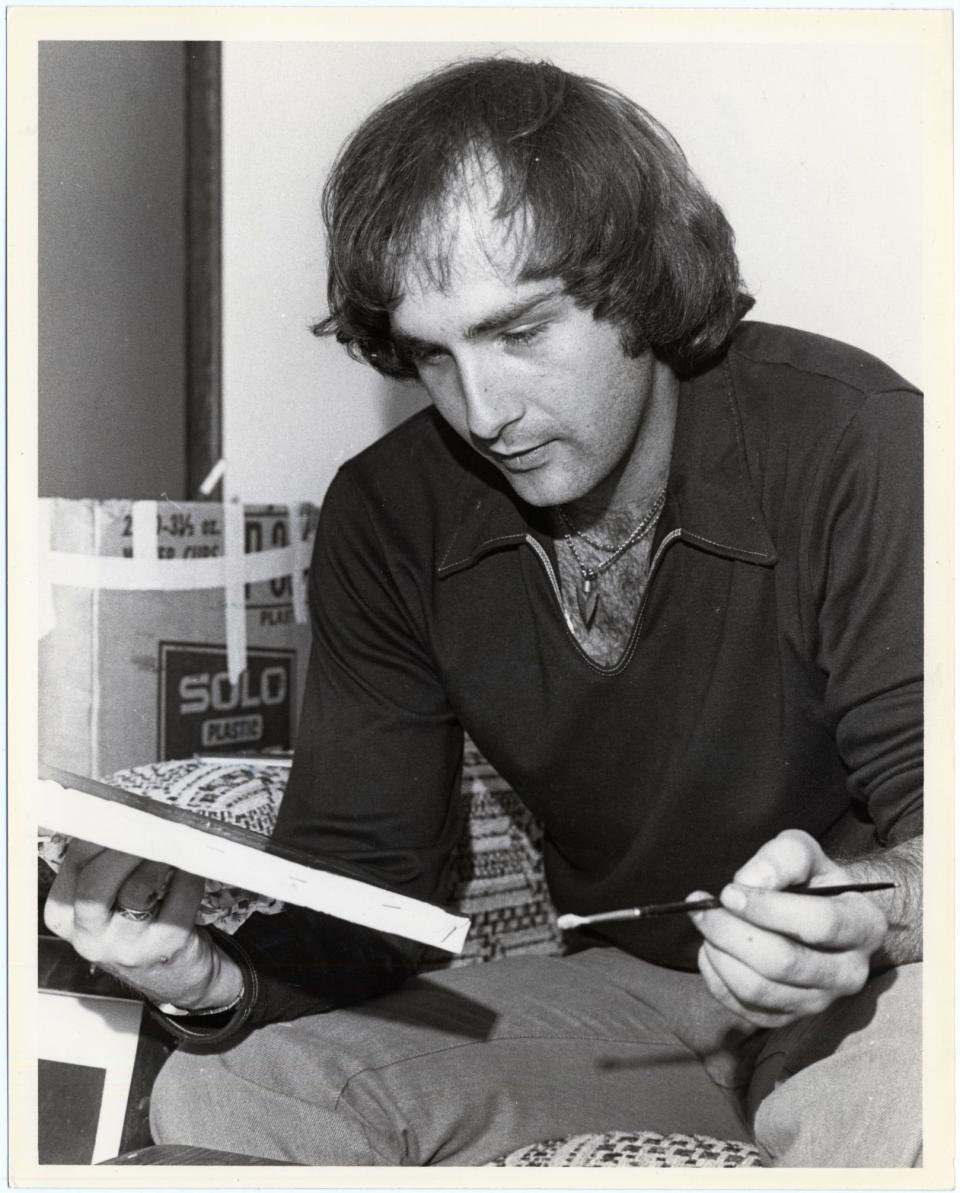
He helped plan a Lancaster drugstore robbery in early 1975. Not much later, Lancaster police arrested him, and he pleaded guilty to robbing the men and the store.
He was sentenced to at least two years in prison and paroled in April 1977. Six months later, the campus-area rapes started.
Dr. David Caul at the Athens Mental Health Center wanted to treat Milligan by "fusing" him --- combining all of his personalities into one. But it turned out Milligan was already fused in a personality called "The Teacher."
The Teacher helped the other personalities learn their special talents, but he didn't hold Milligan's consciousness. The others did. Caul learned of The Teacher in a conversation with Ragen, the personality who decided to commit the campus-area robberies.
Caul played a recording of Ragen for "Billy," the core personality. Billy knew that he had other personalities, but that was the first time he had seen proof. In that way, Caul drew The Teacher into consciousness in December 1978. It was the first time Milligan had felt like one person since he was little.
'The Minds of Billy Milligan'
The account of that treatment is told in The Minds of Billy Milligan, by Daniel Keyes, bestselling author of Flowers for Algernon and an Ohio University English professor at the time. Keyes began interviewing Milligan around the same time The Teacher emerged. The book, published in 1981, gave details of Milligan's life that hadn't been made public before.
Not long after The Teacher emerged, Caul began giving Milligan unsupervised furloughs from the hospital. The Dispatch reported that fact in March 1979, stirring criticism from state legislators and Athens residents. The Teacher receded during the publicity that followed, and Milligan's multiple personalities reappeared.
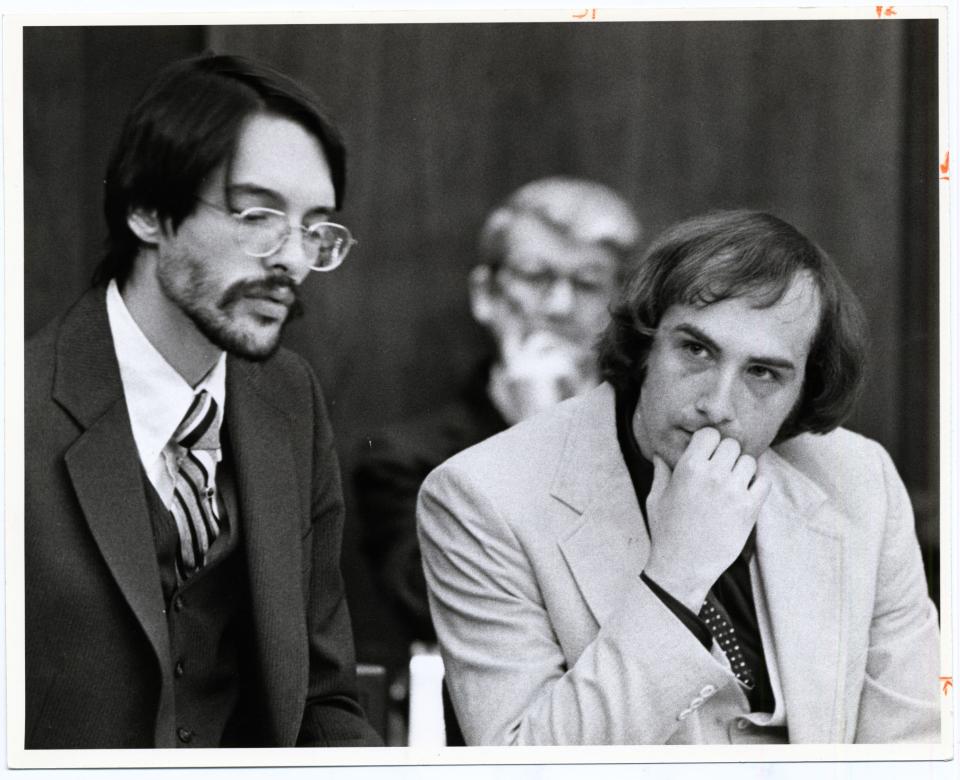
The Dispatch followed with other reports, which Keyes and others still describe as biased and unfair, of Milligan faking an overdose, of Milligan selling his artwork and buying a car, of a party at the hospital. An Athens County Common Pleas judge, after hearing testimony that Milligan was a security risk, transferred him to Lima State Hospital for the Criminally Insane.
Keyes reported in his book that Milligan thought that was a "chamber of horrors." When the hospital began its transition to a prison in 1980, Milligan was transferred to the Dayton Forensic Center and then the Central Ohio Psychiatric Hospital; and, eventually, after more treatment and expert opinion that he was no longer a danger, he was transferred back to Athens.
But there's more.
Milligan drove a truck in Athens from which shots were fired. He was confined to stricter hospitals. He escaped from the Central Ohio Psychiatric Hospital in 1986, then left videotapes for local media outlets at the Columbus Greyhound Bus station complaining of his hospital treatment. At one point while he was on the run, he worked at a hot-tub business in Washington state. He was arrested in Miami several months later.
Billy Milligan released from Ohio mental hospital; MOv
In 1988, experts agreed that Milligan had fused, and he was released from Ohio mental hospitals after 11 years. He was released from all supervision three years later, in 1991. And only then did he begin to fade from the public eye.
He sprang up on occasion. He moved to California to work on a movie about his life. James Cameron, who later directed Titanic; Joel Schumacher, who directed Batman Forever; and actors John Cusack, Leonardo DiCaprio and Colin Farrell were all reported to be involved at various points, but the movie still hasn't been made.
News came that a California judge had found Milligan incapable of handling his own affairs in 1996. Ohio took him to court for royalties on The Minds of Billy Milligan and recovered $120,000 of the $450,000 spent on his treatment.
He declared bankruptcy in San Diego. He came out of it in 2000. And that's about all anyone will say of Billy Milligan now.
A database search for Milligan came back with more than a dozen addresses: Encinitas, Calif.; San Diego; Las Vegas. One was in Beverly Hills. Letters sent by The Dispatch searching for him came back undeliverable.
Keyes, 80, who wrote a follow-up book about Milligan published only in Japan, said from his home in southern Florida that he hasn't talked to his subject in more than a decade. He was sure that Milligan wouldn't talk for this story because he perceived The Dispatch as "anti-Billy" in the past.
Harding, 78, the psychiatrist who first worked with Milligan's multiple personalities, said he also hasn't spoken to Milligan in many years. He said that, looking back, he wished he had been more aggressive in his treatment, and that the case could have been given more study without so much controversy.
Caul, the doctor who worked with Milligan most closely, died in 1988. Milligan's defense attorneys also have passed away.
Richard Kipperman, the trustee who handled Milligan's estate in California between 1996 and 2000, said he lost contact with him before he came out of bankruptcy. After Milligan's creditors were paid, there was money left, but Kipperman hasn't been able to find Milligan to give it to him.
"Do you know where he is?" he asked.
Milligan's last stepfather, Del Moore, said he doesn't know where his stepson is and otherwise didn't want to comment.
After a couple of weeks of searching for Milligan and his friends and family, The Dispatch received a letter from his sister, Kathy. Her mother has had no contact with Milligan in 15 years, she wrote.
She wrote of the poor treatment her brother received in hospitals, of the way he became a political pawn and of the unfair way she believes The Dispatch covered the story.
"People are not as caring and compassionate as we would like to believe," she wrote.
She gave no hint about how to find her brother.
This article originally appeared on The Columbus Dispatch: Multiple-personality case of Billy Milligan still fascinates

